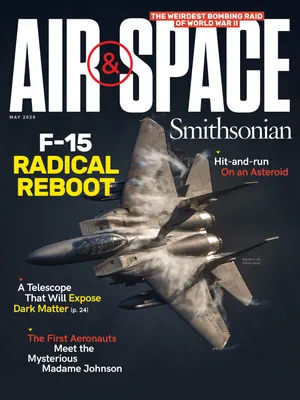The Navy’s Drone Fleet is Growing
Aircraft carriers are being readied for next-generation warfare that relies on unmanned aerial vehicles.
:focal(959x1279:960x1280)/https://tf-cmsv2-smithsonianmag-media.s3.amazonaws.com/filer/dc/e6/dce6fc94-ef1e-43fc-a1e7-009eb7f40b52/32f_am2020_mq25_180830-n-no101-001_live.jpg)
The U.S. Navy is installing specialized mini-control centers for drones on its aircraft carriers as they go through overhauls and maintenance. At a recent conference, Captain Chuck Ehnes, the Navy’s in-service aircraft carrier program manager, said the Unmanned Aviation Warfare Centers are being built into Nimitz- and Ford-class carriers to operate Boeing’s MQ-25 Stingray unmanned aerial tanker and other drones that the Navy might operate from its aircraft carriers in the near future.
“Because of the importance of drones and the appetite for more and more of them—and because the ability to control them is changing so quickly—you want a dedicated center so you can condense and streamline the fast-emerging technology,” says Kris Osborn, a military analyst who writes online for The National Interest.
The Navy intends to procure eight carrier-based MQ-25 Stingrays by 2024. Although the unarmed Stingrays have no sting, they are expected to have a tremendous impact on military readiness. The flying fuel depots effectively extend the “combat radius” of F/A-18s and F-35Cs, while allowing the carrier to remain out of range of increasingly sophisticated missiles, says Osborn. “If you can have a carrier around 900 miles offshore and it’s still projecting the same kind of attack power, it’s a very big deal,” he says.
The retinue of carrier-based drones will likely expand in coming years. A recent study from the Center for Strategic and Budgetary Assessments in Washington, D.C. recommends the creation of an air wing consisting of only 20 piloted aircraft, plus 24 drones equipped for electronic warfare and missile defense.
/https://tf-cmsv2-smithsonianmag-media.s3.amazonaws.com/accounts/headshot/mark-strauss-240.jpg)

/https://tf-cmsv2-smithsonianmag-media.s3.amazonaws.com/accounts/headshot/mark-strauss-240.jpg)